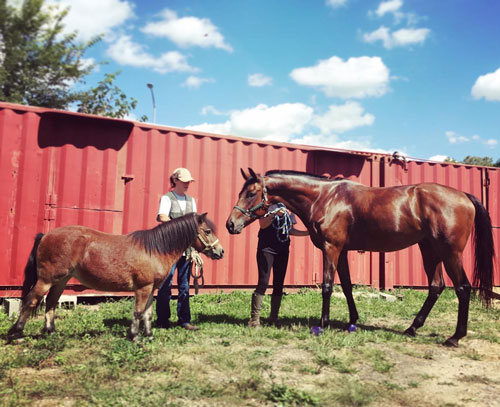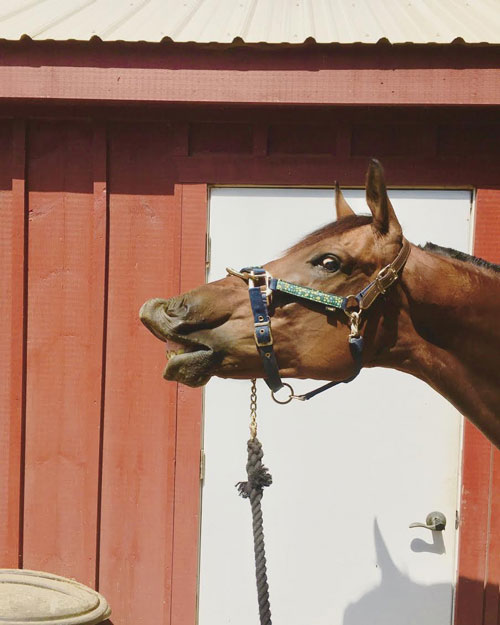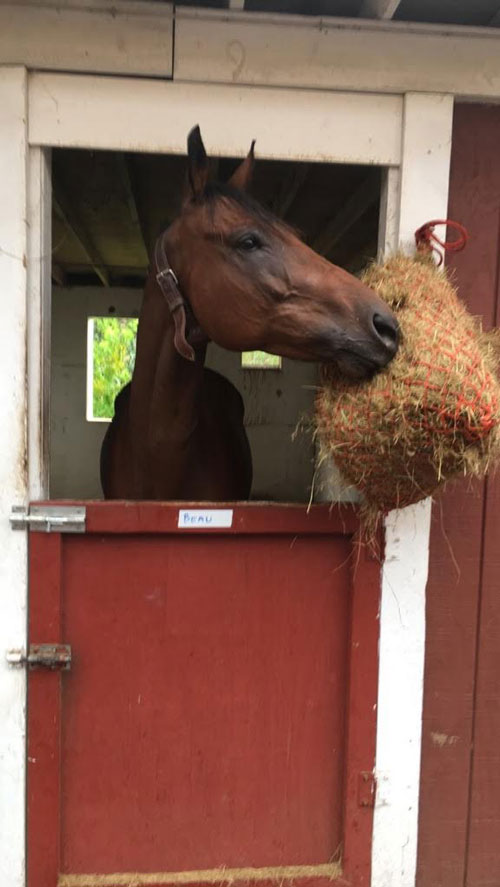Stable Rent
What it's like to keep and maintain a pet horse in New York City, the largest city in the U.S., in 2017. As it turns out, it's not particularly cheap.
Editor’s note: Hey guys, Ernie here with the latest piece from Andrew Egan, who previously told us about going to the lobby and grabbing ourselves a treat. This time, he’s makin’ hay.
Sponsored By … You?
If you find weird or unusual topics like this super-fascinating, the best way to tell us is to give us a nod on Ko-Fi. It helps ensure that we can keep this machine moving, support outside writers, and bring on the tools to support our writing. (Also it’s heartening when someone chips in.)
We accept advertising, too! Check out this page to learn more.
$1,350
The estimated amount of money spent annually per pet in New York City. To calculate this number, the New York City Economic Development Corporation looked at numbers from the American Veterinary Medical Association and the U.S. Census. Surprisingly, this is just the dog and pet population of the city with no mention of birds, fish, or other pets. Also unmentioned is whether bodega cats were included in the survey. Assuming one cat per bodega (which I’m fairly certain is a city law), that’s another 16,500 cats, according to the New York City Bodega Owners Survey. Yet another reason why vending machines would be a crummy replacement for bodegas.

(All photos by author)
Having a horse in NYC in 2017 is an expensive endeavor
By at least one count, there are some 1.1 million dogs and cats in New York City. That’s roughly one dog or cat for every eight New Yorkers. In the short time I’ve lived here, I’ve been surprised by the number and diversity of pet owners. I’ve met bodega-dwelling snake charmers, aquarists with elaborate setups, and even horse owners.
It’s unsurprising that horses have a long history in New York. Horse drawn carriages have been city staples for centuries and still operate as tourist attractions across the city. The NYPD also uses a small stable of horses for crowd control and are frequently seen in Times Square. Their home at 53rd Street cost $30 million to build and houses 27 horses. Yep, even horse apartments in Midtown cost more than $1 million.
At the beginning of the 20th century, horses were an everyday part of life. There was one horse for every 10 New Yorkers. By the 1920s, the number of city horses dropped considerably as mechanization took over. The NYPD’s Mounted Unit estimates there is now one horse per 10,000 residents. The end result has been a steady decline in the number of city stables with more valuable real estate being converted to more profitable use. There has long been a trend of converting carriage houses into chic housing.
The total number of private horses owners in the city is small, perhaps a few hundred total. There are only six stables that cater to private owners in the boroughs with another one or two further north and more west in New Jersey. Considering the cost of owning a horse anywhere, you could rightly assume that this group is an affluent lot, even for New York. But one or two of them have a distinct passion for horses they carry with them, wherever they go, cost be damned.
$15k
The rough annual estimate one New York City resident pays to keep her horse in Queens. This amount includes veterinary costs, food, transportation, riding equipment, and miscellaneous, like horse sunglasses. The stable fee is the lion’s share of cost, exceeding $10,000, according to Eleanor Harrison, a New York City horse owner.

Writing this story was kinda the best. (photos by author)
How one NYU student—and horse owner—pulls off her expensive hobby
Within 20 minutes of meeting Eleanor “Ellie” Harrison, you already know a lot about her. She’s a junior at NYU studying psychology. She works three jobs, one in a chain restaurant, one in fine dining, and her internship. Oh, and she owns a horse.
Beau is a six year-old off-the-track thoroughbred that currently lives in Queens after a year in the Bronx. He summers with Ellie in Annapolis, Maryland, her hometown.
Here he is eating some hay:

Chrysippus died watching a donkey eat figs. I get it now.
Beau’s home is Sunrise Stables, former headquarters of the National Federation of Black Cowboys and current home of GallopNYC, a therapeutic riding non-profit. The stables are surprisingly bucolic and lush with trees. Most of Beau’s neighbors help those suffering from a variety of ailments, including cerebral palsy, multiple sclerosis, and PTSD. Beau is one of the only privately owned horses in the stable and he probably has about as much space as the average Manhattan apartment. (In fact, I measured and Beau’s stable is bigger than my apartment in Brooklyn. One and a half stables at Sunrise is pretty close equal to the average size of a Manhattan studio apartment.)
“The horseback riding business in New York City is only in trouble because of space,” Alicia Kershaw, Gallop’s executive director, told Commercial Observer earlier this year. “There is a demand for recreational riding, but much more for therapeutic.”
Operating out of six stables that serve 500 people a week is expensive but GallopNYC offsets the cost with donations and government grants. The early days of the organization saw issues raising funds to purchase existing stables and land. Founded in 2005, GallopNYC didn’t start offering lessons for a full two years due to space concerns. Now, the nonprofit operates six stables that serve 500 people a week. They secure sizeable donations and government grants but also have to get creative to actually achieve their mission. Home Depot donated supplies and volunteers to reopen Sunrise Stables after Gallop acquired the property after the National Federation of Black Cowboys operated the site.
Though she admits receiving some financial assistance for tuition, Ellie is like most college students. She works multiple jobs and internships on top of her full time academic schedule. She has loans and tuition increases frustrate her like every other student. By her own estimation, Ellie spends nearly 70 hours a week at work and school. Then there’s studying, her boyfriend, and, of course, Beau.
“I spend 15 hours a week with him,” Ellie said from behind the bar of the Park Avenue restaurant where she works. “Because it’s so expensive and an untraditional thing to do in the city, a lot of people don’t understand why I do it.”
Horses have inspired countless examples of eccentric behavior throughout history. Numerous war horses were buried with the generals that lead them into battle. Alexander the Great built the city of Bucephala to honor his fallen steed, Bucephalus. Twenty years after the death of Bamboo Harvester, the horse that played Mr. Ed on TV, fans placed a granite marker on his unmarked burial site in Oklahoma.
Substantial empires and fortunes have been made from the backs of horses, resulting in fanatical devotion that continues to day, though for different reasons. Ellie endures the cost and burden for a fairly practical one: stress relief.
“I study a service related field, I work in the service industry, and I help others at my internships. I feel [horse riding] is one of the only things I do for me.”
Horse riding remains a popular activity, of course. There are an estimated two million horse owners in the United States. Due to obvious space requirements, most horse owners live in rural surroundings and are heavily concentrated in the West.
Over the years, I’ve spent countless hours writing and researching obsessive communities. But the horse owners of New York City are a special class. There are elements of danger and dedication that make for a truly interesting eccentric hobby. Most that encounter Ellie’s story fixate on the cost, but I’ve learned that focused interest has a way of making five-figure sums disappear quickly.
Moreso, as a pack a day smoker and inveterate drinker, who am I to argue?
Andrew Egan is yet another writer living in New York City. A graduate of the University of Texas at Austin, Andrew writes about crime, obsessive eccentrics, and anything that might lead to a good story at CrimesInProgress.com. He was previously a reporter at Forbes Magazine and ABC News. His most recent work has appeared in Atlas Obscura, Blue Skies Magazine, and Tedium.
Editor’s note: This story has been updated to clarify the nature of GallopNYC’s operation.
:format(jpeg)/2017/09/tedium091917-iloveimg-compressed.gif)
/2017/09/tedium091917-iloveimg-compressed.gif)


/uploads/andrew_egan.jpg)